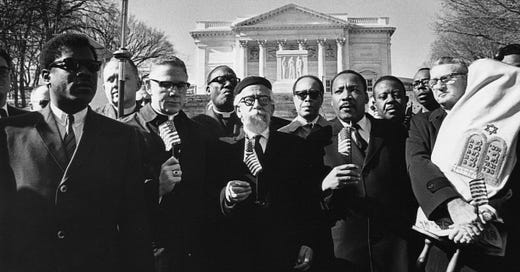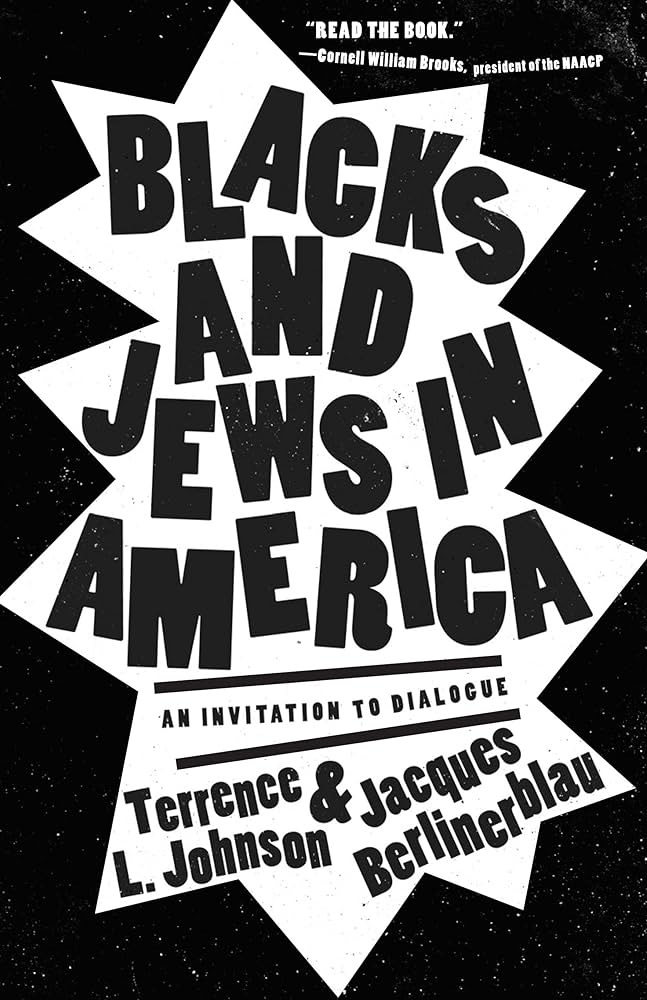By Guest Contributing Writer Marc S. Friedman
The book "Blacks and Jews in America: An Invitation to Dialogue" by Terrence L. Johnson and Jacques Berlinerblau aims to create a new dialogue between two minority groups that have historically faced adversity and discrimination in the United States.
Co-authored by Professors Johnson and Berlinerblau, who teach a course entitled “Blacks and Jews” at Georgetown University, the book explores the complex relationships between Jews and Blacks, while seeking to restore “the Grand Alliance” that blossomed during the Civil Rights movement of the 1950’s and 60’s, when Blacks and Jews marched together arm-in-arm.
This is a uniquely structured conversational work. It opens with a dialogue between the authors through which they explore the origins of Black and Jewish relationships in America going back to the slave trade of the 1600’s. What follows are thoughtful essays by Johnson and Berlinerblau, and additional dialogues between them, on 20th Century Liberalism and its effect on “the Grand Alliance.”
They note that the splintering of that Alliance started with the Black Power Movement of the 1970’s and, especially, when Stokeley Carmichael kicked Jewish and other White activists out of the Student Nonviolent Coordinating Committee (SNCC).
The authors also engage in thought-provoking conversations about the contemporary perspectives of Black and Jewish Millennials, the controversies surrounding Louis Farrakhan and the Nation of Islam, and the implications of the Middle East crisis for Black-Jewish relations in America.
The final dialogue concerns the place of Afro-Jews in America today. There are several forms of Afro-Judaism. As Berlinerblau describes, this includes Afro-American converts to Judaism and, as a subset, children of African ancestry who are adopted by Jewish parents and convert.
Also there are the so-called “civil rights babies,” children of a Jewish and non-Jewish African-American parents.
Berlinerblau posits that, in his view, Afro-Jews are critically important to the creation of a meaningful dialogue between Blacks and Jews, hopefully leading not just to a rapprochement but to the reinvigoration of “the Grand Alliance.”
Berlinerblau states,
“I feel that if many types of Afro-Jews are shown proper respect and are affirmed into white Jewish communities (assuming they want to be there), then we can get to those…issues where Afro-Jews can facilitate discussions between gentile African Americans and white Jews. The first issue is with Jewish white-skin privilege.”
In addition to their conversations and essays, Johnson and Berlinerblau interview Dartmouth Professor Susannah Heschel, whose father, Rabbi Abraham Joshua Heschel, marched in 1965 arm-in-arm with Dr. Martin Luther King in Selma, Alabama.
Dr. King and Rabbi Heschel appear in an iconic photo often described as symbolizing the “the Grand Alliance” between Blacks and Jews. However, Professor Heschel believes that rather than being a source of pride for the Jewish community, “this is a photograph that should be a challenge to you!” In her view, the photo should challenge Jews to fight anti-Black racism, including that which exists in the Jewish community.
The authors also interview Yvonne Chireau, a Professor at Swarthmore College where she teaches courses on African American religions. Professor Chireau describes the impact that Judaism has had on some African religions. Referring to the Old Testament, she explains,
“…there was a powerful myth in the story of the Hebrews or the biblical Israelites that really mapped onto so many features of the Black experience from the Diaspora to slavery and beyond. There were so many aspects of that myth that were appealing, and it was readily available to inspire African American religious folk.”
Throughout “Blacks and Jews in America” the authors refer to the biblical recounting of the Exodus of Jews from Egypt and the profound impact this “from slavery to freedom” narrative has had on Blacks and Jews, and their perceptions of their own places in the World.
“Blacks and Jews in America” weaves the reader into the historical tapestry of the experiences of both communities. The authors shed light on Blacks’ and Jews’ shared struggles and moments of collaboration, such as their battle for Civil Rights, which was led by Thurgood Marshall on behalf of the NAACP, whose founders included Jews, and Jack Greenberg, who headed the NAACP’s Legal Defense Fund.
They also discuss periods of tension and intense misunderstanding and distrust. For example, the book cites the notorious Crown Heights Riots of 1991 in Brooklyn, New York, that began when two Guyanese children were unintentionally struck by a Jewish driver who ran a red light.
As Berlinerblau correctly observes, “…there are no two groups in this country that have had so much solidarity and so much strife between them. They have had so much interaction.”
Importantly, as noted above, "Jews and Blacks in America" does not shy away from addressing difficult and controversial topics. As an American Jew, this reviewer sometimes found the points being made - such as Johnson’s observations about Israel and Palestinian aspirations for statehood, and American Jews’ “Whiteness” and their perceived preferential treatment in America - to be discomforting yet quite thought-provoking.
However, to their credit, Johnson and Berlinerblau always approach these issues with a sense of optimism, framing discussions about these topics as opportunities for growth and understanding rather than seeing them as insurmountable barriers.
The book is rooted in the authors’ sincere desire to bring these two communities back together again. They consistently emphasize the importance of open and respectful conversation, steering away from polemics.
While the book's primary focus is on the relationship between Blacks and Jews, its themes resonate more broadly in a way that is applicable to the pervasive divisiveness in contemporary America. It is this component that enhances the value of “Blacks and Jews in America.”
Readers are challenged to reflect on the importance of building bridges across communities now at odds with each other. Like Blacks and Jews in America, there is too much yelling and not enough listening between these communities. Failure is not an option if our goal is to achieve a harmonious society where there is an opportunity for fulfillment for all. This is the broader message of “Blacks and Jews in America.”
"Blacks and Jews in America: An Invitation to Dialogue" is a thought-provoking and timely contribution to the ongoing American conversation about race, identity, and collaboration. As difficult as it may appear to be, Blacks and Jews should try again to rekindle the “Grand Alliance” that served both groups and America well. This is no time for American Blacks and Jews to just sit in the corner “wringing our hands”.
In fact, as in the past, Blacks and Jews are facing a common enemy – White Supremacists. As Berlinerblau correctly observes,
“This present moment – post-Charlottesville- white supremacist rampage, post-Charleston Emmanuel African Methodist Episcopal (AME) Church slaughter, post-Pittsburgh Tree of Life Synagogue massacre, post-pandemic, post-January 6 insurrection, post-Trump, and, in light of the continued murder of Black citizens… is a good a time as any to take stock.”
Johnson and Berlinerblau conclude that Blacks and Jews in America should unite to face their common enemy - White Supremacy. The most certain way for Blacks and Jews to prevail against this common enemy and thrive in America is not to give up on each other. “Blacks and Jews in America” is a poignant invitation to open this dialogue. As Cornell William Brooks, President of the NAACP remarked, “Read the book, accept their invitation, there is no more necessary time than now.”
Marc S. Friedman was a trial lawyer for 48 years and now is an Executive Coach. He received a B.A. in philosophy from The Johns Hopkins University and a Juris Doctor from The George Washington University Law School. He regularly contributes reviews of Black history books to Black Books, Black Minds. You can learn more about Mr. Friedman atwww.mastermethod.co.
Black Books, Black Minds” is a key foundation of my “Great Books, Great Minds” passion project. For me, it’s a labor of love fueled by the endless hours of work I put into researching and writing these feature articles.
My aim is to ignite a new world of community, connection, and belonging through the rich trove of Black History books, thought leaders, and authors we unearth.
So if you are enjoying this digital newsletter, find it valuable, and savor world-class book experience featuring non-fiction authors and book evangelists on Black History themes, then please consider becoming a paid member supporter at $6.00/month or $60.00/year.
— Diamond-Michael Scott






